#Army Nurses Pension Act of 1892
Text

The lady circled in red was Lucy Higgs Nichols. She was born into slavery in Tennessee, but during the Civil War she managed to escape and found her way to 23rd Indiana Infantry Regiment which was encamped nearby.
She stayed with the regiment and worked as a nurse throughout the war. After the war, she moved north with the regiment and settled in Indiana, where she found work with some of the veterans of the 23rd. She applied for a pension after Congress passed the Army Nurses Pension Act of 1892 which allowed Civil War nurses to draw pensions for their service.
The War Department had no record of her, so her pension was denied. Fifty-five surviving veterans of the 23rd petitioned Congress for the pension they felt she had rightfully earned, and it was granted. The photograph shows Nichols and other veterans of the Indiana regiment at a reunion in 1898. She died in 1915 and is buried in a cemetery in New Albany, Indiana.
#african#afrakan#kemetic dreams#africans#brownskin#afrakans#brown skin#lucy higgs nichols#civil war#tennessee#congress#army nurses#pension act of 1892#indiana#new albany
76 notes
·
View notes
Text
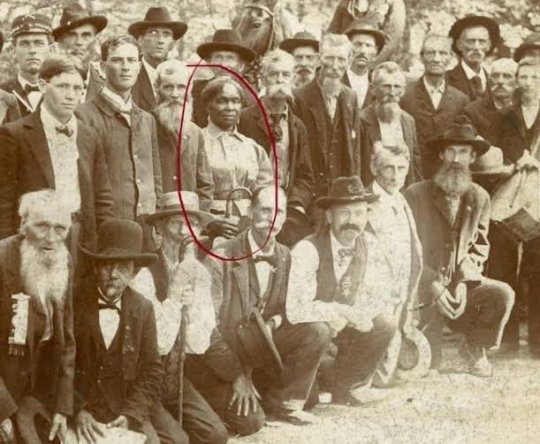
The lady circled in the photo was Lucy Higgs Nichols. She was born into slavery in Tennessee, but during the Civil War she managed to escape and found her way to 23rd Indiana Infantry Regiment which was encamped nearby.
She stayed with the regiment and worked as a nurse throughout the war.
After the war, she moved north with the regiment and settled in Indiana, where she found work with some of the veterans of the 23rd.
She applied for a pension after Congress passed the Army Nurses Pension Act of 1892 which allowed Civil War nurses to draw pensions for their service.
The War Department had no record of her, so her pension was denied. Fifty-five surviving veterans of the 23rd petitioned Congress for the pension they felt she had rightfully earned, and it was granted.
The photograph shows Nichols and other veterans of the Indiana regiment at a reunion in 1898. Beloved by the troops who referred to her as “Aunt Lucy,” Nichols was the only woman to receive an honorary induction into the Grand Army of the Republic, and she was buried in an unmarked grave in New Albany with full military honors in 1915.
Source: African Archives Twitter
175 notes
·
View notes
Text

Lucy Higgs Nichols (red circle) was born into slavery in Tennessee, but during the Civil War she managed to escape and found her way to 23rd Indiana Infantry Regiment which was encamped nearby.
She stayed with the regiment and worked as a nurse throughout the war. After the war, she moved north with the regiment and settled in Indiana, where she found work with some of the veterans of the 23rd.
She applied for a pension after Congress passed the Army Nurses Pension Act of 1892 which allowed Civil War nurses to draw pensions for their service. The War Department had no record of her, so her pension was denied. Fifty-five surviving veterans of the 23rd petitioned Congress for the pension they felt she had rightfully earned, and it was granted. The photograph shows Nichols and other veterans of the Indiana regiment at a reunion in 1898. She died in 1915 and is buried in a cemetery in New Albany, Indiana.
1 note
·
View note
Text
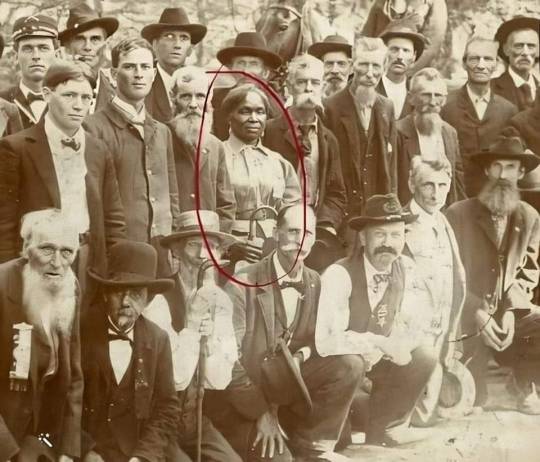
Black History month. Here is your 1st black history heroine.
The lady circled in the photo was Lucy Higgs Nichols. She was born into slavery in Tennessee, but during the Civil War she managed to escape and found her way to 23rd Indiana Infantry Regiment which was encamped nearby. She stayed with the regiment and worked as a nurse throughout the war.
After the war, she moved north with the regiment and settled in Indiana, where she found work with some of the veterans of the 23rd.
She applied for a pension after Congress passed the Army Nurses Pension Act of 1892 which allowed Civil War nurses to draw pensions for their service. The War Department had no record of her, so her pension was denied. Fifty-five surviving veterans of the 23rd petitioned Congress for the pension they felt she had rightfully earned, and it was granted.
The photograph shows Nichols and other veterans of the Indiana regiment at a reunion in 1898. Beloved by the troops who referred to her as “Aunt Lucy,” Nichols was the only woman to receive an honorary induction into the Grand Army of the Republic, and she was buried in an unmarked grave in New Albany with full military honors in 1915.
#black history month#black history#african american history#african american#civil war#Lucy Higgs Nichols#Civil War nurses#in history#educate yourselves#educational#educate yourself#Army Nurses Pension Act of 1892#black history heroine#black women
4K notes
·
View notes
Text
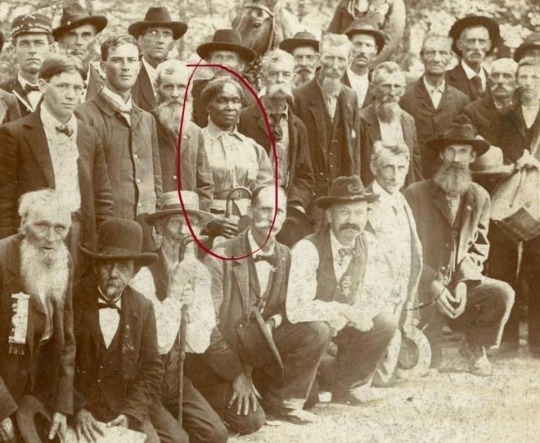
The lady circled in red was Lucy Higgs Nichols. She was born into slavery in Tennessee, but during the Civil War she managed to escape and found her way to 23rd Indiana Infantry Regiment which was encamped nearby. She stayed with the regiment and worked as a nurse throughout the war.
After the war, she moved north with the regiment and settled in Indiana, where she found work with some of the veterans of the 23rd.
She applied for a pension after Congress passed the Army Nurses Pension Act of 1892 which allowed Civil War nurses to draw pensions for their service. The War Department had no record of her, so her pension was denied. Fifty-five surviving veterans of the 23rd petitioned Congress for the pension they felt she had rightfully earned, and it was granted.
The photograph shows Nichols and other veterans of the Indiana regiment at a reunion in 1898. She died in 1915 and is buried in a cemetery in New Albany, Indiana.
56 notes
·
View notes
Text
The lady circled in the photo was Lucy Higgs Nichols. She was born into slavery in Tennessee, but during the Civil War she managed to escape and found her way to 23rd Indiana Infantry Regiment which was encamped nearby. She stayed with the regiment and worked as a nurse throughout the war.
After the war, she moved north with the regiment and settled in Indiana, where she found work with some of the veterans of the 23rd.
She applied for a pension after Congress passed the Army Nurses Pension Act of 1892 which allowed Civil War nurses to draw pensions for their service. The War Department had no record of her, so her pension was denied. Fifty-five surviving veterans of the 23rd petitioned Congress for the pension they felt she had rightfully earned, and it was granted.
The photograph shows Nichols and other veterans of the Indiana regiment at a reunion in 1898. Beloved by the troops who referred to her as “Aunt Lucy,” Nichols was the only woman to receive an honorary induction into the Grand Army of the Republic, and she was buried in an unmarked grave in New Albany with full military honors in 1915. 🤎✊🏾
#blackhistorymonth #civilwar
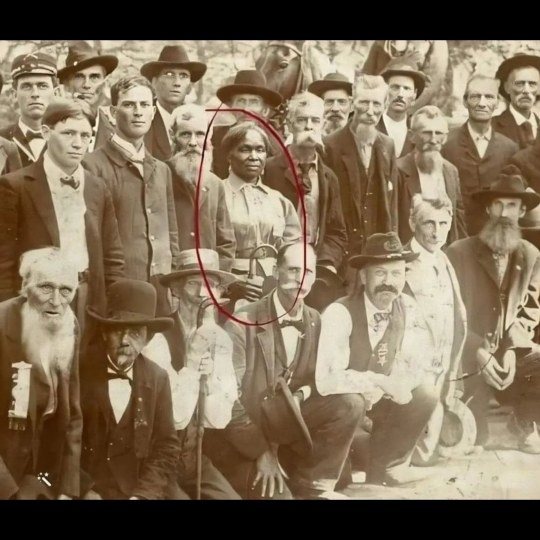
10 notes
·
View notes
Text
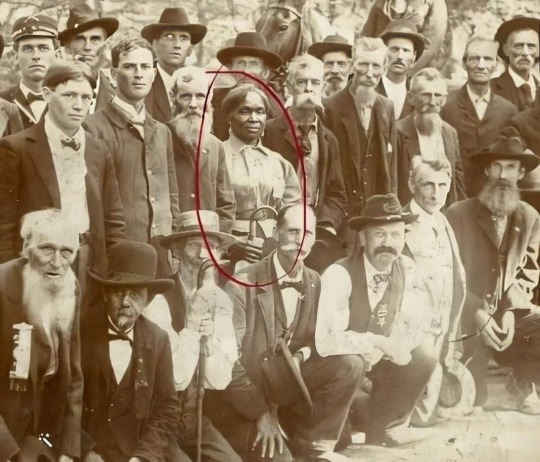
The lady circled in the photo was Lucy Higgs Nichols. She was born into slavery in Tennessee, but during the Civil War she managed to escape and found her way to 23rd Indiana Infantry Regiment which was encamped nearby. She stayed with the regiment and worked as a nurse throughout the war.
After the war, she moved north with the regiment and settled in Indiana, where she found work with some of the veterans of the 23rd.
She applied for a pension after Congress passed the Army Nurses Pension Act of 1892 which allowed Civil War nurses to draw pensions for their service. The War Department had no record of her, so her pension was denied. Fifty-five surviving veterans of the 23rd petitioned Congress for the pension they felt she had rightfully earned, and it was granted.
The photograph shows Nichols and other veterans of the Indiana regiment at a reunion in 1898. Beloved by the troops who referred to her as “Aunt Lucy,” Nichols was the only woman to receive an honorary induction into the Grand Army of the Republic, and she was buried in an unmarked grave in New Albany with full military honors in 1915.
8 notes
·
View notes
Photo
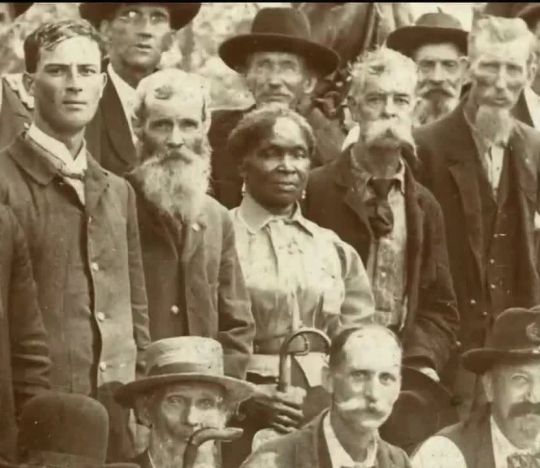
Lucy Higgs Nichols. She was born into slavery in Tennessee, but during the Civil War she managed to escape and found her way to 23rd Indiana Infantry Regiment which was encamped nearby. She stayed with the regiment and worked as a nurse throughout the war. After the war, she moved north with the regiment and settled in Indiana, where she found work with some of the veterans of the 23rd. She applied for a pension after Congress passed the Army Nurses Pension Act of 1892 which allowed Civil War nurses to draw pensions for their service. The War Department had no record of her, so her pension was denied. Fifty-five surviving veterans of the 23rd petitioned Congress for the pension they felt she had rightfully earned, and it was granted. The photograph shows Nichols and other veterans of the Indiana regiment at a reunion in 1898. Beloved by the troops who referred to her as “Aunt Lucy,” Nichols was the only woman to receive an honorary induction into the Grand Army of the Republic, and she was buried in an unmarked grave in New Albany with full military honors in 1915. #blackhistorymonth is here https://www.instagram.com/p/CZZ6oWNuir_/?utm_medium=tumblr
0 notes
Photo

#Amazon https://t2m.io/yKyvdj1X
#kindle https://t2m.io/Uiw7XiiC
#iBook https://t2m.io/BiwhKot6
#Nook https://t2m.io/HPkXeCNb
#Google https://t2m.io/7mrtgMrv
#Kobo https://t2m.io/8m46203M
In contrast to pension benefits available to soldiers, widows and orphans, Congress fought over the Army Nurses Pension Act for years. Many female nurses had served as volunteers without being officially hired. After the great Civil War battles, women showed up on the field and gave lifesaving aid to soldiers.
Soldiers and male medical personnel received benefits, but female nurses faced a protracted pension struggle. Legislation eventually made compensation possible for a select few. The National Archives holds pension applications of some 2,000 women nurses. False starts and failed compromises between Congress and two organizations, the Woman’s Relief Corps (WRC) and the Army Nurses’ Association (ANA) delayed the Army Nurses Pension Act. President Benjamin Harrison finally signed the bill on August 5, 1892. The law awarded female Union Army nurses a pension of $12 per month—provided they served at least six months and had been hired by someone authorized by the War Department to engage nurses.
Stricter requirements—six months’ service for women nurses versus 90 days for soldiers—and a difficult application process meant many women went without compensation. After four years of catastrophic loss of life and property, society clung to pre-war attitudes, and women’s rights were neglected. Most women who served never qualified for pensions, even some who were disabled because of their service. French Mary Tepe provides one tragic example of a woman who deserved, but went without, compensation.
0 notes
Text
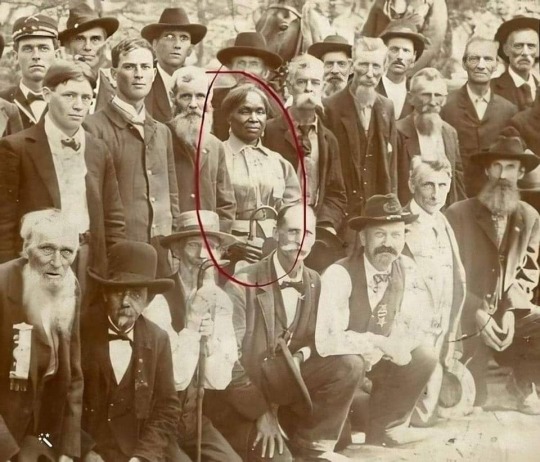
The lady circled in the photo was Lucy Higgs Nichols. She was born into slavery in Tennessee, but during the Civil War she managed to escape and found her way to 23rd Indiana Infantry Regiment which was encamped nearby. She stayed with the regiment and worked as a nurse throughout the war.
After the war, she moved north with the regiment and settled in Indiana, where she found work with some of the veterans of the 23rd.
She applied for a pension after Congress passed the Army Nurses Pension Act of 1892 which allowed Civil War nurses to draw pensions for their service. The War Department had no record of her, so her pension was denied. Fifty-five surviving veterans of the 23rd petitioned Congress for the pension they felt she had rightfully earned, and it was granted.
The photograph shows Nichols and other veterans of the Indiana regiment at a reunion in 1898. Beloved by the troops who referred to her as “Aunt Lucy,” Nichols was the only woman to receive an honorary induction into the Grand Army of the Republic, and she was buried in an unmarked grave in New Albany with full military honors in 1915.
Lucy Higgs Nichols aka Aunt Lucy
190 notes
·
View notes